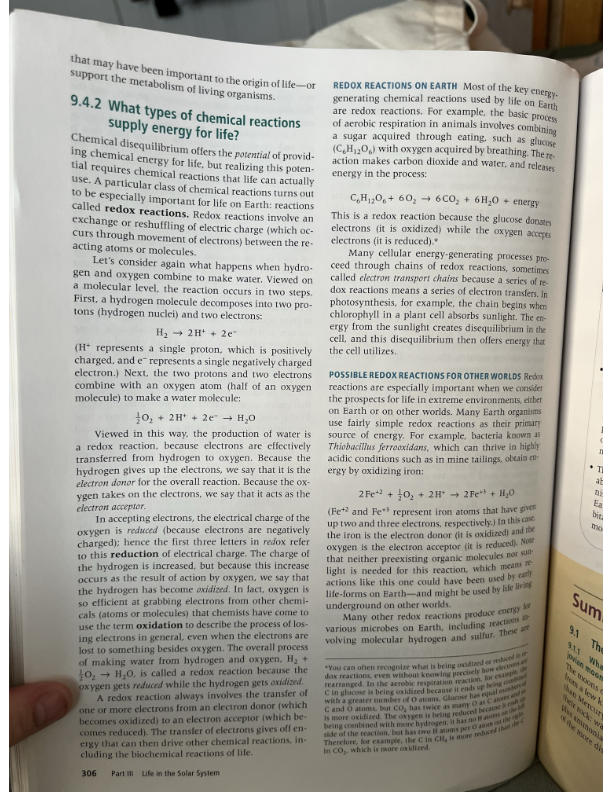Redox Reactions: Powering Life and Beyond
Redox Reactions and Energy for Life

What Types of Chemical Reactions Supply Energy for Life?
- Chemical Disequilibrium: Essential for life; it requires chemical reactions to release potential energy.
Redox Reactions
-
Definition: Redox reactions are chemical processes involving the transfer or movement of electrons between atoms or molecules.
-
Example: Reaction between hydrogen and oxygen:
- Hydrogen Decomposition:
- Protons (H) : Positively charged, represent hydrogen nuclei.
- Electrons (e) : Negatively charged, represent electron transfers.
- Water Formation:
- Electron Donor: Substance losing electrons, such as hydrogen.
- Electron Acceptor: Substance gaining electrons, such as oxygen.
- Hydrogen Decomposition:
-
Role in Biology:
- Oxidation: Process where electron donors lose electrons.
- Reduction: Process where electron acceptors gain electrons.
Redox Reactions on Earth
- Aerobic Respiration:
- Key biological process using redox reactions; involves glucose and oxygen.
- Equation:
- Electron Transport Chains: Series of reactions transferring electrons; critical in cellular energy production, including photosynthesis.
Possible Redox Reactions for Other Worlds
-
Application in Extreme Environments:
- Organisms in Harsh Conditions: Use redox reactions for energy, such as bacteria in acidic conditions.
- Example:
- Thiobacillus Ferrooxidans: Bacteria using iron-based reactions.
- Equation:
-
Implications for Extraterrestrial Life:
- Redox reactions could support life in environments lacking sunlight, such as subsurface or subsurface oceans on other planets or moons.
Extended readings:
courses.lumenlearning.com
Redox Reactions | Biology for Majors I - Lumen Learning
sites.gsu.edu
Redox Reactions in Biology - sites@gsu
www.geeksforgeeks.org
Examples of Redox Reactions in Everyday Life - GeeksforGeeks